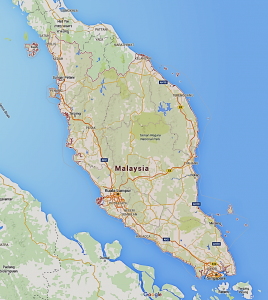You’ve reached the Malaysian page of the Global Research Alliance
 In Malaysia, agriculture contributes approximately 10% of Malaysia’s gross domestic production. At least one-third of the country’s population depends on the sector for its livelihood, with some 14% employed on farms and plantations. Initial National Communication (INC, 2000), greenhouse gases (GHG) from agricultural activities in 1994 estimated at 14.8% of CH4 and 13.3% of N2O from the total country emissions of CH4 and N2O respectively. Malaysia’s Second National Communication (NC2) submitted in 2011 reported that Malaysia was a net sink in 2000 with the net emissions after accounting for the removal was -26.79 million tonnes (Mt) CO2eq. The agriculture sector contributed 3% of the total GHGs in 2000 at 5906 Mt CO2eq.
In Malaysia, agriculture contributes approximately 10% of Malaysia’s gross domestic production. At least one-third of the country’s population depends on the sector for its livelihood, with some 14% employed on farms and plantations. Initial National Communication (INC, 2000), greenhouse gases (GHG) from agricultural activities in 1994 estimated at 14.8% of CH4 and 13.3% of N2O from the total country emissions of CH4 and N2O respectively. Malaysia’s Second National Communication (NC2) submitted in 2011 reported that Malaysia was a net sink in 2000 with the net emissions after accounting for the removal was -26.79 million tonnes (Mt) CO2eq. The agriculture sector contributed 3% of the total GHGs in 2000 at 5906 Mt CO2eq.
Livestock
GHG sources from livestock include livestock enteric fermentation and manure management. Livestock enteric fermentation takes place in the digestive system. Microbial fermentation will break down food into soluble products that can be utilized by the animals. Methane is produced in the rumen of ruminants by bacteria (methanogens) as a byproduct of fermentation process, which can be exhaled or excreted by the animal. The amount of CH4 produced and emitted by an individual animal depends primarily upon the animal’s digestive system and the amount and type of feed it consumes. Anthropogenic CH4 and N2O emissions are products of manure management activities in livestock. During the anaerobic decomposition process of manure, CH4 is released while direct N2O emissions are produced as part of the nitrogen cycle through the nitrification and denitrification of the organic nitrogen in livestock manure and urine. Initial National Communication (INC, 2000) reported that GHG from enteric fermentation in 1994 estimated at 10.1% whereas GHG from manure management estimated at 14.0% from the total country emissions. Malaysia’s Second National Communication (NC2) reported that GHGs from enteric fermentation in 2000 estimated at 8.0% whereas GHGs from manure management estimated at 12.4% from the total country emissions respectively.
Paddy Rice
Major acreage of rice in Malaysia is grown on flooded fields. When fields are flooded, aerobic decomposition of organic material gradually depletes most of the O2 present in the soil, causing anaerobic soil conditions which produce CH4 through anaerobic decomposition of soil organic matter by methanogens. The water management system under which rice is grown is one of the most important factors affecting CH4 emissions. Upland rice fields are not flooded, and therefore are not believed to produce CH4. In deep water rice fields (i.e., fields with flooding depths greater than one meter), the lower stems and roots of the rice plants are dead, so the primary CH4 transport pathway to the atmosphere is blocked. The quantities of CH4 released from deep water fields, therefore, are believed to be significantly less than the quantities released from areas with shallower flooding depths. All rice in Malaysia is grown under continuously flooded conditions; none is grown under deep-water conditions. Initial National Communication (INC, 2000) reported that GHG from rice cultivation in 1994 estimated at 18.6% whereas NC2 reported that GHG from rice cultivation in 2000 estimated at 15.9% from the total country emissions respectively.
Country contacts
Shanmugavelu A/L M Sithambaram (Dr) A/L M SITHAMBARAM (DR.)
Director, Livestock Research Centre
shan@mardi.gov.myMohamad Zabawi Bin Abdul Ghani (Dr) ZABAWI BIN ABDUL GHANI (DR.)
Principal Research Officer, Director General Office
bawi@mardi.gov.my